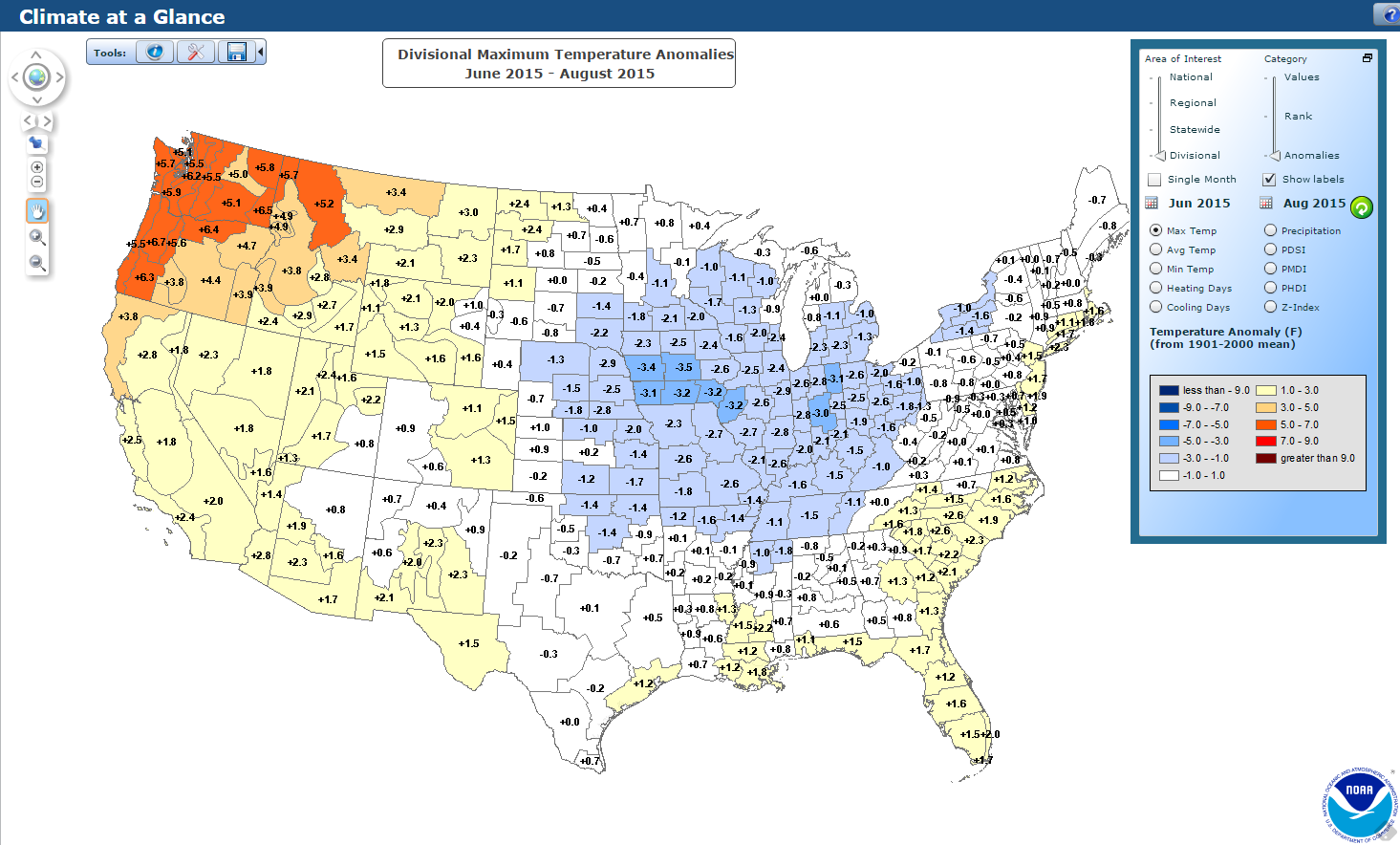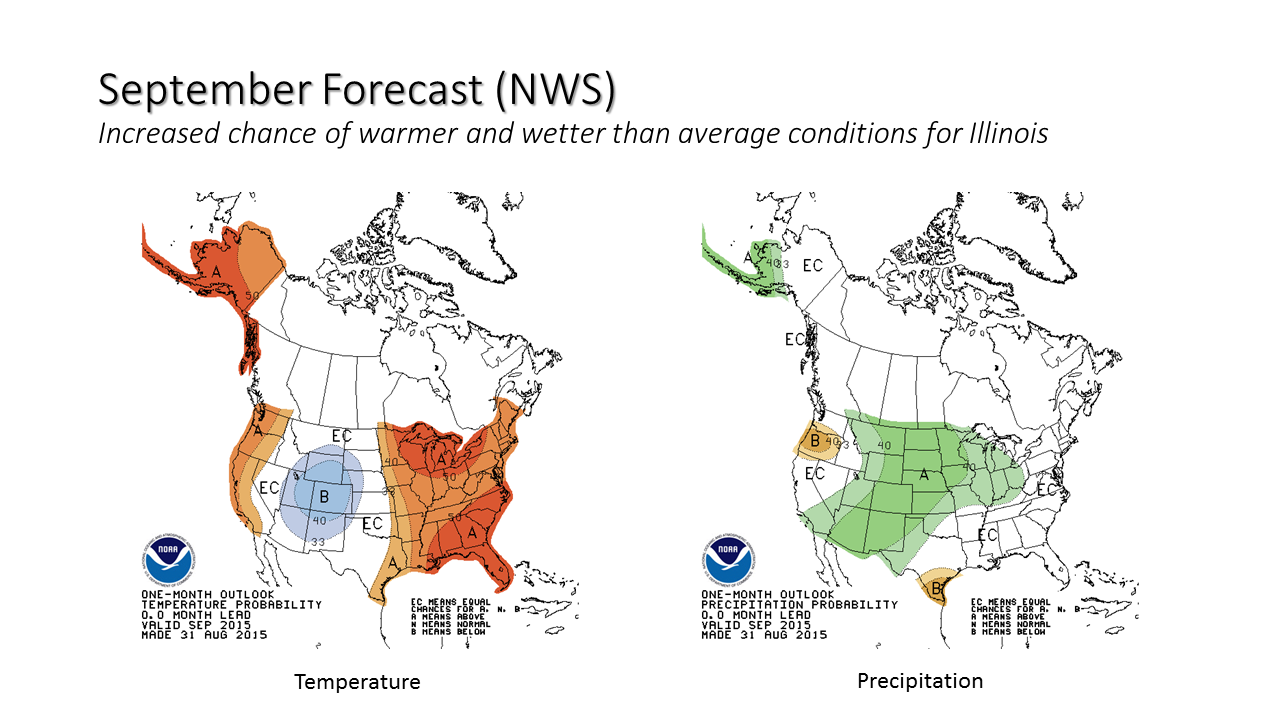Cooler than average daytime highs (first map, blue shaded areas) and warmer than average night-time lows (second map) this summer were common across much of the Midwest, according to data from the National Centers for Environmental Information.
It is typical in Illinois for this to happen in summer after a wet spring. We marched through summer with above-average soil moisture, streamflows, and lake levels. As a result, more of the sun’s energy went into evaporating this water instead of heating up the land surface and the atmosphere. The end results were higher humidity levels and lower high temperatures.
At night, the higher humidity levels kept temperatures from dropping as much. The old forecasting rule of thumb was to consider the dew-point temperature as the floor to night-time temperatures. Therefore, the higher dew-point temperatures led to higher night-time temperatures.*
Finally, all the extra humidity in the atmosphere turned into more rainfall for thunderstorms, maintaining the wetter conditions through at least July.

Continue reading “Cooler Days and Warmer Nights This Summer in Midwest”



